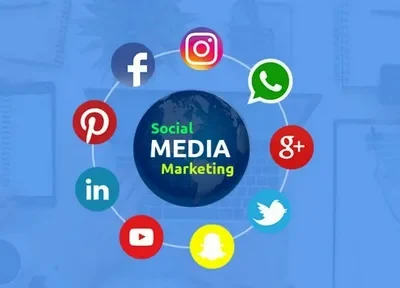Have you ever searched for your business online, only to find it’s either invisible or, even worse, has outdated information? In today’s hyper-connected world, where a potential customer is never more than a few taps away from finding a solution, that’s not just a minor inconvenience—it’s a missed opportunity, a closed door, and a quiet cash register.
For years, I’ve worked with business owners from all walks of life, and I’ve heard the same story over and over: “I know I need to be online, but where do I even begin? It all feels so overwhelming.” We’re not just talking about a single website anymore. We’re talking about Google, Bing, Apple Maps, Yelp, and dozens of other places where people are actively looking for businesses just like yours. A strong presence on these platforms is essential for survival, let alone growth. In fact, research from BrightLocal shows that over 80% of U.S. consumers search for local businesses on a weekly basis. What’s more, a staggering 62% of people would actively avoid a business if they found incorrect information about it online. This is why having accurate, consistent information everywhere is not a suggestion—it’s a non-negotiable part of your marketing strategy.
But what if I told you there’s a way to tackle a huge chunk of this daunting task in just one day? It’s not about magic or some secret hack. It’s about a strategic, focused, and disciplined effort. I’m going to walk you through a proven process that will help you create or update your business listings on 50+ online directories in a single 24-hour sprint. We’ll even touch on some of the top free business listing sites in USA and how to leverage them for maximum impact. By the end of this guide, you won’t just know what to do, you’ll have a clear, step-by-step plan for getting it done.
Part 1: The Foundation — Why This Matters More Than Ever
Before we dive into the nitty-gritty of the process, let’s talk about the “why.” Why should you spend an entire day doing this? The answer is simple: citations.
In the world of local SEO (Search Engine Optimization), a citation is any online mention of your business’s NAP—Name, Address, and Phone Number. Think of these as digital breadcrumbs. The more consistent and numerous these breadcrumbs are, the more confident search engines like Google become that your business is legitimate and trustworthy. This trust directly translates into higher local search rankings.
It’s a foundational element of local SEO, and here’s the best part: it’s something you have complete control over. You don’t have to wait for a website to link to you or for a customer to leave a review. You can proactively build your online presence, one directory at a time. The cumulative effect is powerful. When you’re listed on dozens of authoritative sites, you’re not just getting a backlink; you’re building a network of trust signals that tell search engines you’re a real, established business in your community.
The Big Three: Starting with the End in Mind
While we’re aiming for 50+, not all directories are created equal. You need to prioritize. The first three listings you should tackle are, without a doubt, the most important:
- Google Business Profile (GBP): This is the king of all listings. Your GBP powers Google Search, Google Maps, and Google’s local “3-pack.” Without a complete and verified GBP, you are essentially invisible to a huge portion of your potential customers. A Semrush study found that businesses in the local map pack get 126% more traffic and 93% more calls, website clicks, and requests for directions compared to businesses ranked lower. This is your number one priority.
- Bing Places for Business: While Google dominates, Bing still holds a significant market share, especially for older demographics. Your Bing listing powers searches on Bing and its partner sites like Yahoo. It’s a quick, easy win that should be a no-brainer.
- Apple Maps Connect: A growing number of people use Apple devices as their primary tool for navigation. If you’re not on Apple Maps, you’re missing out on a huge audience who might be looking for you through Siri or the Maps app.
Think of these three as your base camp. Get them right first, and the rest of the journey becomes much easier. They are the most important citations you will ever build.
Part 2: The Command Center — Your Master Business Profile Document
You can’t do this sprint without a plan. The single most important thing you can do to make this a one-day project is to create a “Master Business Profile” document before you start. This document will be your cheat sheet, your one source of truth for every single piece of information about your business. Consistency is everything. Even minor inconsistencies (e.g., “Main St.” vs. “Main Street” or “Suite 100” vs. “Ste. 100”) can confuse search engines and dilute your SEO efforts.
Open a spreadsheet or a Word document and start filling it out. This is the only “prep” you need to do, and it’s what will save you hours on the day of the sprint.
Your Master Business Profile Checklist:
- Business Name: Your official, legal name. No variations.
- Physical Address: The exact address, including suite number, spelled out identically every time.
- Phone Number: Your main business number. Use the same format (e.g.,
(123) 456-7890). - Website URL: The exact URL you want people to visit.
- Business Description (Short): A 160-character elevator pitch. Perfect for quick bios.
- Business Description (Long): A 250-400 word detailed description of what you do, who you serve, and why you’re different.
- Business Categories: A list of all relevant categories. Google Business Profile has specific ones, but also brainstorm a few broad and specific terms.
- Hours of Operation: Your exact hours for each day of the week.
- Photos: Have a few high-quality photos ready to go: your logo, a picture of the storefront, and a few of the inside or of your products/services.
- Social Media Links: Links to your Facebook, Twitter, LinkedIn, Instagram, etc.
- Payment Methods: List all accepted payment methods (Visa, Mastercard, cash, etc.).
- Services List: A bulleted list of your key services or products.
- Tagline: Your official business tagline.
This document is your secret weapon. When you’re in the middle of a signup form, you won’t have to stop and think about what to write. You’ll simply copy and paste from your master sheet. This is how you blitz through 50+ listings in one day.
“The difference between a successful business and a struggling one in the digital age is often not about the product or service itself, but about its discoverability. You could have the best product in the world, but if no one can find you, it’s just a best-kept secret. Local listings are the map, the directions, and the sign on the door—all in one.”
Part 3: The Sprint — Your 24-Hour Action Plan
Now, for the main event. Grab a large coffee, block out your schedule, and get ready to go. We’re going to break this down into a few manageable phases.
Phase 1: The “Must-Dos” (First 2-3 hours)
These are the big-name directories that you absolutely, positively need to be on. They are high-authority sites that carry a lot of weight with search engines and customers.
- Google Business Profile (GBP): Go to business.google.com. Claim your business, fill out every single field using your master document, add photos, and request a verification postcard. You’ll need to wait for this to arrive, but you can fill out the rest of your profile in the meantime.
- Bing Places for Business: Similar to GBP. Go to bingplaces.com, find your business or create a new listing. Copy and paste all the data from your sheet.
- Apple Maps Connect: Visit mapsconnect.apple.com. Sign in with your Apple ID and get started. It’s a very straightforward process.
- Yelp: The undisputed king of online reviews. Claim your Yelp page, fill it out completely, and upload your high-quality photos.
- Facebook Business Page: You likely already have one, but if not, create it. Make sure the NAP information on your page matches your master document exactly.
- Yellow Pages: Still a relevant directory that gets a surprising amount of traffic and is trusted by search engines.
- Foursquare: This one is a data aggregator. Many other smaller apps and directories pull their data from Foursquare. Getting your listing right here has a ripple effect.
- TripAdvisor: If you’re in the hospitality or tourism industry, this is a must. If not, you can skip it.
Phase 2: The “Data Aggregators” and “Niche Players” (Next 4-5 hours)
Once the big players are done, you need to focus on the sites that help spread your information far and wide. Data aggregators collect business information and distribute it to hundreds of other directories, apps, and even car navigation systems.
- Infogroup (Foursquare, etc.): Submitting to the major aggregators can be a bit more complex, but a listing on a site like Foursquare, which is one of the main players, is a great start.
- Better Business Bureau (BBB): A listing here adds a huge layer of trust and credibility.
- Manta: Manta is a popular directory for small businesses.
- MerchantCircle: Another solid choice for local visibility.
- Angi (formerly Angie’s List): Essential for home services, contractors, and handymen.
- Healthgrades/ZocDoc: For doctors, dentists, and other healthcare professionals.
- Avvo: For lawyers and law firms.
And now, for the main event—the directory list! Here is a list of more than 50 of the top free business listing sites in USA that you can work through. This list is a mix of general, niche, and local-focused directories.
General Directories (Go-To’s for All Business Types):
- Chamber of Commerce: A powerful and trustworthy site.
- Yelp: A review powerhouse.
- Yellow Pages: The classic phone book, now online.
- Superpages: Another long-standing directory.
- Manta: Strong focus on small businesses.
- EZlocal: A solid, no-frills directory.
- Brownbook: A global directory with a strong U.S. presence.
- Hotfrog: Easy to use with a decent domain authority.
- Citysearch: A hyper-local directory.
- ShowMeLocal: Another popular local directory.
- Local.com: Focused on connecting people with local businesses.
- CitySquares: A small business-focused site.
- Local Guides by MapQuest: For map-based searches.
- Yell.com: A UK-based directory with a U.S. presence.
- USDirectory.com: A simple but effective directory.
- Find Us Local: A clean, user-friendly directory.
- Insider Pages: Another great site for reviews.
- Tupalo: A social recommendation service.
- Nextdoor: An important platform for reaching people in your direct neighborhood.
- DexKnows: A digital version of the phone book.
Professional & Niche Directories (Targeted Audience):
- Angi (Angie’s List): Home services.
- Avvo: Lawyers.
- Healthgrades: Doctors and medical professionals.
- ZocDoc: Dentists and doctors.
- Thumbtack: A wide range of services, from plumbers to photographers.
- Houzz: Home design and remodeling pros.
- HomeAdvisor: Another great site for home services.
- TripAdvisor: Restaurants, hotels, and attractions.
- OpenTable: Restaurants.
- Yelp for Restaurants: Specialized Yelp features.
- Grubhub: Food delivery.
- WebMD: Health information and doctor listings.
- ApartmentTherapy: Home services and design.
- G2/Capterra/TrustRadius: B2B software and service providers.
- Clutch: Another B2B service directory.
- All Pages: A simple but comprehensive business directory.
- Best of the Web (BOTW): A paid-listing site with a free option.
- Crunchbase: For tech companies and startups.
- Goodreads: Authors and publishers.
- Niche-Specific Associations: Search for your industry’s specific trade association or guild. Many have member directories.
Social & Data-Driven Platforms:
- LinkedIn: Create a company page.
- Instagram Business Account: Make sure all your bio information is correct.
- Pinterest Business Profile: For product-based businesses.
- Reddit: While not a directory, a presence in relevant subreddits can be a powerful citation.
- MapQuest: The old-school map app.
- EZlocal: A directory that also has a focus on maps.
- Yalwa: A local-focused directory.
- eLocal: Another strong local-focused option.
- Cylex: A multi-country directory.
- 2findlocal: A directory that focuses on local searches.
- USCity.net: A network of city-specific directories.
- Tuugo.us: Part of a global directory network.
- Whitepages: The digital version of a classic.
Phase 3: The Automation & Maintenance (Last 2 hours)
Once you’ve submitted to the bulk of these, you’ll be in a rhythm. You’ll be copy-pasting so fast you’ll barely remember which site you’re on. This is where the Master Business Profile really pays off.
Part 4: The Long-Term Play — What’s Next?
Adding your business to 50+ directories in a single day is a massive accomplishment, but your work isn’t done. Think of this as the foundation. The next steps are about building on that foundation.
- Verification: Many of these directories will send a verification postcard to your business address or require a phone call. Make sure you complete these verification steps to ensure your listings go live and are fully trusted.
- Regular Audits: Set a reminder on your calendar every six months to do a quick audit. Log into your top 10-15 accounts and make sure all the information is still accurate. Have your hours changed? Did you add a new service? Update it everywhere.
- Encourage Reviews: Once your listings are live, you have a new goal: getting reviews. Encourage happy customers to leave reviews on your most important directories (Google, Yelp, Facebook, etc.). Respond to every review, both positive and negative. This shows you’re engaged and that you care about your customers.
- Content and Link Building: Your new citations are a fantastic start for your local SEO, but they’re not a substitute for a comprehensive strategy. Continue to build your website’s authority through valuable content and link-building. You can even use your expertise to contribute to other sites. Searching for a free guest posting site list can help you find blogs and publications that accept guest contributions, which is a powerful way to earn authoritative backlinks and increase your brand’s visibility.
Conclusion
I know it sounds like a lot of work. And it is. This is not a task for the faint of heart. But it is an incredibly impactful one that can be accomplished in a single, focused day. By preparing your “Master Business Profile” and tackling the most important directories first, you will not only create a massive number of valuable citations but also establish a consistent, trustworthy online presence that will serve as the backbone of your local marketing for years to come.
So, take a deep breath, brew that coffee, and get ready to transform your business’s online visibility. You have a plan. You have a list. The only thing left to do is start. In just 24 hours, you can lay the groundwork for a more discoverable, more visible, and more profitable business.
Frequently Asked Questions (FAQs)
1. Is it really worth it to do this manually instead of using a service? Yes, for most small and medium-sized businesses, it is. While automated services like Moz Local or Yext can be convenient, they often come with a high price tag. For a one-time, concentrated effort, doing it manually ensures accuracy and gives you a much better understanding of your business’s digital footprint. It also gives you direct access to each account, which is crucial for future updates and review management.
2. What if my business information is already on some of these sites? That’s great! Your job is to “claim” the listing. Look for a “Claim this business” or “Is this your business?” link. Once claimed, you can edit the information to ensure it’s 100% consistent with your Master Business Profile document. This is often more important than creating a new listing from scratch, as it centralizes your data.
3. How long does it take for these listings to show up in search results? It varies widely. Your Google and Bing listings will likely update within a few days to a week. Other directories can take anywhere from a few weeks to a couple of months. The key is to be patient and to understand that the compounding effect of all these listings will build over time.
4. Will this help my business’s SEO even if a directory doesn’t have a direct link to my website? Absolutely. The primary benefit of these listings is the “citation,” not necessarily the “backlink.” Search engines look for consistent NAP data across the web as a key ranking factor for local searches. The more times they see your business name, address, and phone number, the more confident they are in your business’s legitimacy. This helps your website rank higher in local search results.
5. What should I do if a directory asks for a payment? We’ve focused on free directories in this guide. Many directories offer paid “premium” or “enhanced” listings. While these can sometimes provide extra features, they are not necessary for the core goal of building citations. Stick to the free options. If a site requires payment, simply move on to the next one on the list.


